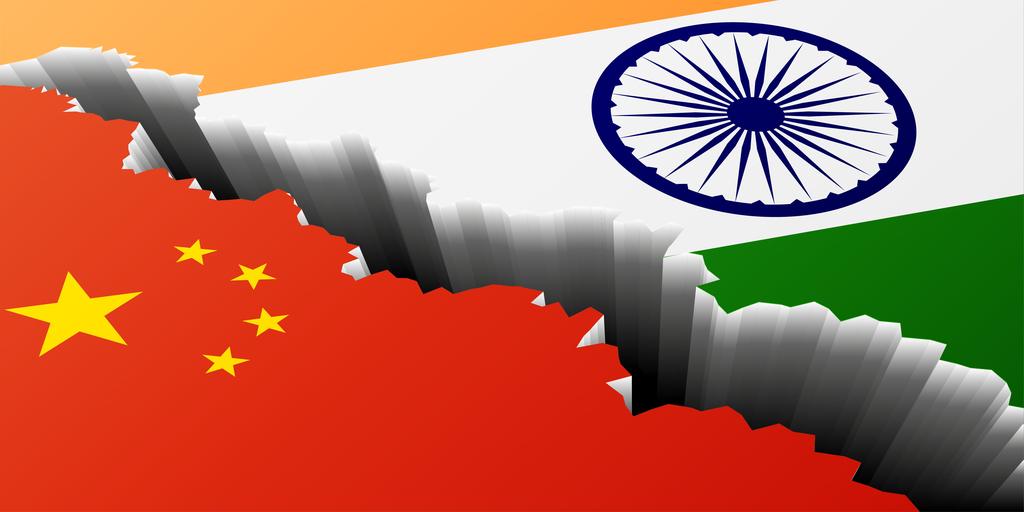A nation must think before it acts.
The uneasy relationship between India and China took a sudden turn for the worse in June. With no apparent warning, a violent clash broke out between Indian and Chinese troops manning a remote section of disputed border in the Himalayas. Because a prior agreement barred firearms in the area, the fighting was conducted with the most primitive of weapons: stones, clubs, iron bars, and bare hands. The sheer intensity of what resembled a “gang war” was evident from the fact that 20 Indian soldiers were killed. Chinese casualties reportedly numbered even more (76 by one count). This is the first time in 45 years that the armed forces of the two countries have actually fought, but that doesn’t mean there haven’t been tensions—far from it.
India and China are in many ways remarkably comparable. They both are huge in size with populations that number around 1.3 billion. Both are heirs to great civilizations that trace their origins back millennia. Both suffered profound humiliations at the hand of the West, including British colonial rule over India and imperial breakdown and semi-colonization of China at the hands of several Western powers led by Britain. Both emerged in their modern form after World War II. India became independent in 1947 and Mao’s People’s Republic triumphed in 1949. They share one of the world’s longest borders—traversing the Himalayas.
New Delhi and Beijing have taken very different paths since the 1940s. India achieved independence through Mahatma Gandhi’s campaign of nonviolence and political negotiations led by Jawaharlal Nehru with London. Independent India embraced British Westminster democracy complete with parliament, an independent judiciary, and a free press. Mao’s China was a stark contrast—a one-party dictatorship with centralized power and animated by a radical interpretation of communism encapsulated as “Mao Zedong Thought.” Despite these obvious differences, India held high hopes for friendly, close relations with China. In 1959, Nehru made a state visit to Beijing under the slogan “India and China are brothers.”
It was wishful thinking. New Delhi assumed that relations would be based on equality and mutual respect—even affection. Beijing, on the other hand, showed little actual interest in India and even less respect. China did not see—and still does not see—India as its equal.
That became crystal clear a few years later. In 1959, the Dalai Lama fled to India as Chinese military units occupied his Tibetan homeland. In 1962, Chinese forces moved to secure their full control over the Tibetan border and in the process attacked poorly equipped Indian army outposts. Chinese army units occupied territory that Beijing viewed as rightfully Chinese—lands that India viewed as its own. For New Delhi, the episode was deeply humiliating, with Chinese forces completely dominant and dictating outcomes in the area. The conflicting border claims remain unresolved despite years of episodic negotiation. In the meantime, India has deployed more capable military forces into the Himalayas while building access roads and airfields. Chinese forces remain unmoved, and it is likely that a repeat of the 1962 war would produce a similar outcome as China has greatly strengthened its military presence in Tibet.
Over the last four decades, China’s story has been one of dramatic economic growth and military modernization. Today’s China is challenging the United States for global leadership in critical technologies while pressing the U.S. Navy to vacate East Asia and the Western Pacific. As Beijing sees it, there is a new sheriff in town, and the old one had better saddle up and get out. This growing rivalry provides an inevitable backdrop to current India-China tensions. For Beijing, any problems with New Delhi are clearly manageable; China is far more powerful and capable, both economically and militarily. Moreover, the Indian economy is highly dependent on imports from China. There is, however, one serious concern. India has long prided itself on its resistance to influence from the great powers (i.e., the United States)—first as a leader of the Non-Aligned Movement and more recently as “strategically autonomous.” New Delhi has always fiercely resisted being drawn into America’s geopolitical orbit. However, as China’s power, ambition, and assertiveness grow, India’s strategic verities are increasingly in question.
The contemporary strategic landscape, viewed from New Delhi, is deeply troubling. Besides China’s military pressure along its border, India sees growing Chinese influence in neighboring states, including Nepal in the north and Sri Lanka in the south, countries that New Delhi has traditionally viewed as within its sphere of influence. Meanwhile, the Chinese navy has established a robust presence in the Indian Ocean while maintaining a military base to the west in Djibouti and building ports for possible military use in Myanmar and Cambodia. Perhaps most troubling, China has long cultivated close ties with India’s archrival, Pakistan. China’s infrastructure investments are producing roads, railways, and ports on India’s western border. If India were capable of building sufficient military power to challenge China, then this picture would look quite different. But that is just a New Delhi pipe dream.
The strategic logic of India’s situation would seem to be rather stark. New Delhi can defer to Chinese preponderance—or it can look for other powers that might partner with it to offset China’s advantage. The list of candidates for such a role is short: Australia, Japan, and the United States. Security dialogues and joint military exercises are well established involving these three and India (“the Quad”). India’s prime minister has had more state visits to Washington over the last two administrations than any other foreign leader.
With all this, New Delhi remains deeply resistant to becoming “aligned.” Beijing, however, seems determined to change that.
The views expressed in this article are those of the authors alone and do not necessarily reflect the position of the Foreign Policy Research Institute, a non-partisan organization that seeks to publish well-argued, policy-oriented articles on American foreign policy and national security priorities.




